How To Swing Bat And Hit Baseball Softball Faster, Farther, & Harder Every Time | Beginner Practice At Home Hitting To Increase Bat Speed, Power, Exit Velocity & In Certain Direction
Learn how to swing a bat and hit a baseball or softball faster, farther, and harder EVERY TIME. Discover beginner practice at home hitting to increase bat speed, power, exit velocity, and how to hit the ball in a certain direction.
Hitting A Baseball: Discover The Secret Of Impact
Debating the intricacies of hitting a baseball (or softball) can be as bad as discussing religion or politics. This is why we look to proven human movement science first. Hitting a baseball NOT easy, but we can make it easier. It has a lot of failure built into the fabric. The objective of every coach, instructor, or parent should be to build as many “fail-safes” into the system as possible.
We’re going to explore the following, as they relate to impact:
- Perry Husband & Effective Velocity,
- 90-Degree Angle to the Spine Rule NOT True?
- University of Miami Study: The Biomechanics of the Baseball Swing
- Conclusion…
First I want to start by setting the table…
Perry Husband & Effective Velocity
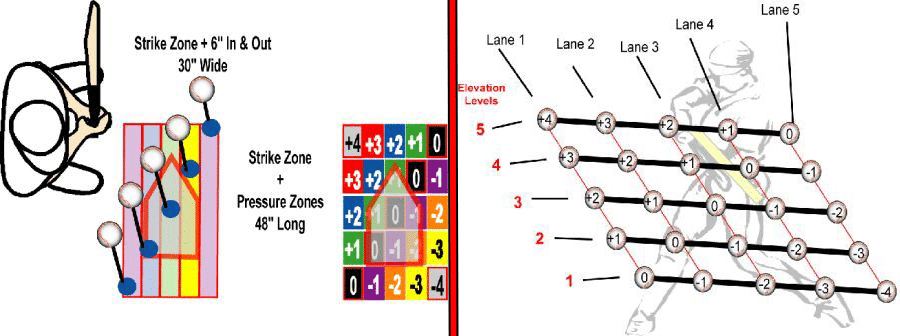
“Pluses” take-away from hitter’s reaction time, “minuses” add to hitter’s reaction time (images are pitcher’s POV). Photos courtesy: HittingIsAGuess.com
The one thing I like about Perry Husband’s contribution to hitting a baseball is he goes by “data, not feelings”.
He’s made a science out of a hitter’s reaction time. Perry Husband has accumulated, “Over 10 years of study and testing of amateur hitters and two years of intense study of major league at bats in a 4 million plus pitch database”. At his site Effective Velocity, Perry Husband explains his Effective Velocity system for pitchers:
“The Downright Filthy Pitching Series is a very in depth study of speed as it relates to the hitter’s reaction time. Initial velocity is the speed of the ball as the radar gun sees it, perceived velocity is the speed of the ball as the mind’s eye sees it and Effective Velocity is the speed it actually is. Effective Velocity (EV) is the initial velocity plus the location effects of the pitch due to different locations having different reaction times…A 90 MPH pitch can and does equal many different speeds, depending on where the pitch is located. “
His data (photo above) suggests that a hitter has to be quicker to pitches up in the zone, and in. And pitches down in the zone and away, give a hitter more time to adjust. Perry Husband reports from his findings:
“Did you know that the highest exit velocities off Major League hitters’ bats come off the pitches in the lowest part of the strike zone? How about that the most homeruns hit are off pitches at the very bottom of the strike zone as well?”
Over the past year, I’ve softened to some of Perry’s hitting a baseball mechanics. His information is vital to understanding if…
SCIENCE-BASED TRAINING:
Improve your hitting strategy dramatically by applying human movement principles.
Learn not only how and what to train but also the science behind the methods.
90-Degree Barrel Angle to the Spine Rule NOT True?
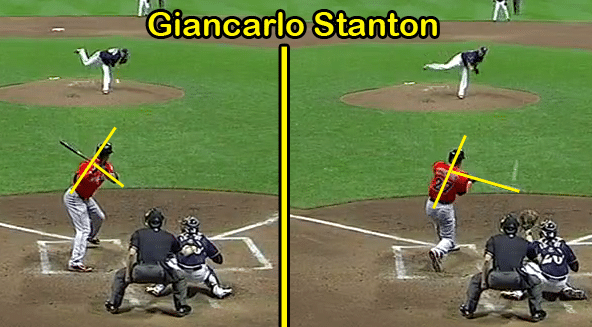
Giancarlo Stanton: 90-degree barrel to spine rule. Note: outside pitch slightly up in zone. Photo courtesy: MLB.com
CLICK HERE for the post that explains this Rule. The preceding post link refers to the barrel, not the front arm to spine angle. There are FOUR ways a hitter gets to pitches at the top/bottom of the strike-zone, and/or inside/outside of the plate…
- Tilting at the waist with the upper body (the lower the pitch, the more the tilt),
- Back knee bend,
- Front knee bend, AND
- Barrel path.
Another reader got upset saying that I’m teaching two different swings. And enlightened me about his extensive study into the brain, and that taking a bent arm from the initiation of the swing and changing the shape to straight is impossible for the brain to do. Click Here for a conversation Perry and I had on the arm bar.
Remember, Perry Husband said that the highest ball exit speeds and home-runs were off of lower pitches? Do you think it could be because the front arm was able to extend at impact? Creating a longer lever and allowing for a smooth transfer of bat speed (angular velocity) into ball exit speed (inertial force). These are fundamental rules in the Conservation of Angular Momentum.
Look, if our goal as coaches is to get hitters 100% on-time, 100% swing effective, then we must take a serious look at the front arm bar. High exit velocity is key to batted ball distance, and without it Launch Angles alone won’t score more runs. Besides, how many commercial and/or passenger airplanes get off the ground without high horizontal velocity? CLICK HERE for an interview we did with Perry Husband about his system.
One last thing to look into hitting a baseball…
University of Miami Study: The Biomechanics of the Baseball Swing
Major shout out to one of my readers and local lesson parents, Nieszka, for bringing this to my attention. This study was done by Dr. David Fortenbaugh at the University of Miami (CLICK HERE if you want to download the 200+ page pdf). Here’s the gist of how the study was put together:
- Study Objective: to compare swings against pitches thrown to different locations and at different speeds.
- AA-level Minor League Baseball players (n=43) took extended rounds of batting practice in an indoor laboratory against a pitcher throwing a mixture of fastballs and changeups.
- An eight camera motion analysis system and two force plates recording at 300 Hz captured the biomechanical
data. - The swing was divided into six phases (stance, stride, coiling, swing initiation, swing acceleration, and follow-through) by five key events (lead foot off, lead foot down, weight shift commitment, maximum front foot vertical ground reaction force, and bat ball contact).
- Twenty-eight kinematic measurements and six ground reaction force measurements were computed based on the marker and force plate data, and all were assessed throughout the phases.
The findings?
According to the Study:
“A large number of biomechanical differences were seen among the swings against various pitch locations. More fully rotated positions, particularly of the pelvis and bat were critical to the batters’ successes on inside pitches while less rotated positions keyed successes against outside pitches. The trail and lead arms worked together as part of a closed chain to drive the hand path. Successful swings had the trail elbow extended more for HIGH IN and flexed more for LOW OUT, though batters often struggled to execute this movement properly. A distinct pattern among successful swings against fastballs, successful swings against changeups, and unsuccessful swings against changeups was witnessed; namely a progressive delay in which the batter prematurely initiated the events of the kinetic chain, especially when unsuccessful in hitting a changeup.”
Hitting a Baseball Conclusion
So, let’s tie up everything we talked about in hitting a baseball…
On pitches low and/or away, the hitter has more reaction time (Perry Husband research), so tilting at the waist (on lower pitches) and extending the front elbow to impact is key (90-degree barrel spine rule). And because the outside and lower pitches will be hit slightly deeper than inside and higher pitches, the trailing elbow will have more bend in it at impact (Miami Study).
There can be a harmonious relationship between an arm bar, and consistency getting to pitches up and in the zone. CLICK HERE for this post that gets into the different “catcher’s gloves” on how to do this. HINT: it has to do with the “belly button” catcher’s glove.
Readers, I want to hear your thoughts on hitting a baseball in the Comments below…
- Fix Late Swings Fast: 2025 Pitch Recognition & See-Decide-Swing Training for Youth Baseball Power Hitters - October 6, 2025
- Safe Youth Weighted Bat Training: Proven Overload/Underload Drills to Increase Exit Velocity in Games Starting Tonight - September 29, 2025
- AI Coaching Course 2025: Youth Baseball & Softball Practice Plan + Off-Season & In-Season Workout Builder Fast - September 23, 2025

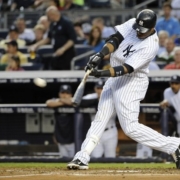
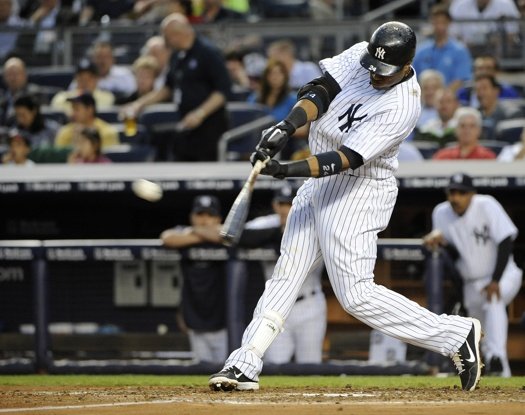
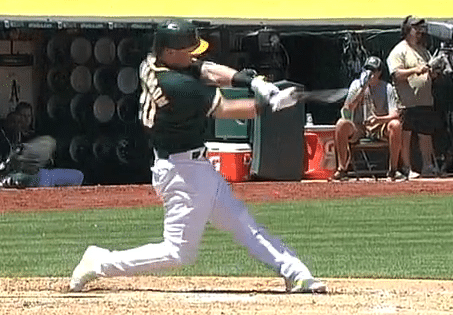
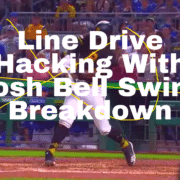
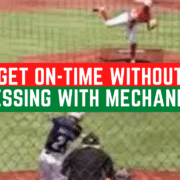
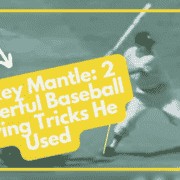



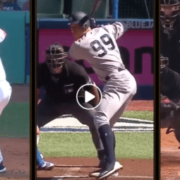




Great job, Joey! Your determined efforts have clarified the misconceptions and misunderstandings. Words are hard to find, both for your readers and, to a lesser extent, for you. Perhaps, a more involved elaboration of your initial contention was needed. You made a most effective use of data and clarification of the 90 degree rule. Maybe a picture or two of hitters at contact, rather than post impact, would aid the uninitiated in understanding the position of the front arm at contact. There are still people out there who think that contact is made out of the Power V.
Joe, Thank you for the kind words. The challenge is taking geek speak and distilling it down. This is the biggest post I’ve done (words wise), and this subject cannot be explained in a 1-2 paragraph email. Now, when this subject comes up, I’ll send a link to this post. Absolute rules like, “you have to be bent at contact,” or “you have to be barred out at contact”, or even before contact are wrong. There needs to be room for natural adjustment, and the bent arm gives this along with bat speed (which is need to get to inside pitches and up). BUT the ultimate goal is “Power-V” passed impact, which transfers bat speed into ball exit speed. This happens with MMA fighters with their cross-body kicks, they go from bent to straight. Not bent to bent. Not straight to straight. There needs to be room to extend. There needs to be room for adjustment too.
Great article Joey. There is a lot there to talk about, but I just want to throw one ingredient into the stew. That is ….. I’m getting the sense that the prevailing wisdom on hitting suggests that the player make adjustments to his swing during the actual swing! Those adjustments must take on many forms as you have brought up here. To my way of thinking … if a player wants to bring a 2 pound wood baseball bat on a specific swing plane hit a ball with power, he has to 100% commit to it. If there is any doubt, hesitation or fluctuation in his mechanics, there will be other breakdowns and the result will be less power. So where does that leave us? We have to make adjustments! I think that calculations and adjustments have to be made before the bat is launched. For the sake of this discussion, my definition of when the bat is launched is before the rotation phase of the swing – which would be just before, at, or just after front heel plant. One clarification on that … I do not believe a player should initiate rotation of the lower half before the upper half.
Obviously these adjustments and calculations have to be instinctive, automatic, and part of a reflex action, but I think we’re asking too much of a player to swing with that velocity, in that much time, and still be able to account for all the variables of the pitched ball. And to further hamper the hitter … then ask him to do it in a 100 th of a second while somewhere in the middle of his swing? You might be able to be somewhat successful swinging a drop 5 or 9 (or even a drop 3) tin bat as a 14 year old, but you’ll never do it with any degree of consistency or accuracy swinging a real bat.
Bob, I totally agree. I think the gentleman that was thinking I was teaching two different swings, misinterpreted what I was saying. Real easy to do over email. You hit the nail right on the head, the adjustments are “instinctual”, not conscious. Conscious thought during the swing would slow it down. I think this is why most young hitters tend to hit faster pitchers better, because everything happens so fast, they can only react instinctually. However, we run into issues with slower pitchers…our timing is thrown off, our swing slows down, and the hitter is forced to “think”.
“There are two ways a hitter gets to pitches at the top/bottom of the strike-zone, and/or inside/outside of the plate…
Tilting at the waist with the upper body (the lower the pitch, the more the tilt),
The back leg angle (thanks Ryan Lehr), AND
Late front arm bar…”
Isnt that three ways? There is yet another way to doing this – barrel of the bat below the hands at contact. The barrel of the bat is below the hands at contact except on a pitch at the letters. Then it would be even with the hands at contact.
Sorry Joe, I added the middle one, but forgot to edit the article. Fixed! And yes, I agree with you on barrel below hands.
Moondog,
“You can’t think and hit at the same time.” (Yogi Berra) Hitting a baseball. Is not a voluntary response like raising your arm to scratch your head.
When does a hitter’s heel drop? I heard that for Babe Ruth that it was as late as when the ball was 10 feet in front of the plate. There is no time to think to determine where the bat should be as to pitch plane.
Joey you make batting an art not a chance event.For most people paying attention to detail is very difficult, so for that reason they do not want to take time to analyze swing ,they are satisfied if by chance ball makes contact with a bat.They call it successful event.Great idea to bent at waist for lower pitch and still stay short on the way to the ball. Yes I also would like to see pictures at ball contact to better illustrate 90degree rule
Thanks Nieshka! On the 90-degree rule, click the link in the post above just below that heading. That article goes into the Rule in great detail using Giancarlo Stanton as an example. In that post, he’s hitting an outside (lower I think) pitch.
I think we have to mention the cause and affect of the force formula acceleration times mass. When the elbows are bent you are more connected to the mass of your body (complete torso). On high pitches the arms are more extended to make contact more out front. On lower pitches the mass is more in play. Also on higher pitches (inside middle) more inclined to pull the ball so it is higher to square up the barrel. (Deflection will be more in play.
oops harder to square up the barrel not “higher”
To me impact is lots of bat on lots of ball. To increase the likelihood of this a batter has to be quick to read/react to the pitch. That requires the conservation of angular momentum, the law of spinning fast. So elbows bent at swing initiation.
If we have that then we can consider mass at impact for distance/power. I believe if we have gotten on pitch plane we can extend through the ball for maximum distance impact.
I’ve seen kids who don’t extend and they cannot hit as far as they should. I also have seen kids not keep their elbows bent at initial rotation and they cannot deal with the inside pitch.
Thank you Jeff! Seems like some of my YouTube comments lately have been people who don’t understand what you so eloquently described. I totally agree.
Well done! All of the content was solid and allows readers to come to informed opinions.
Mine is that the two approaches are equal. I think an early arm bar is actually simpler for pitches down, and away, because it can be maintained throughout the swing to contact in those cases. For inside pitches the front arm goes from straight to flexed, but not back to straight again (save for maybe a few rare instances). Thus, starting with a bent front arm is an approach that simplifies getting to the inside and up and inside pitch, while the early arm bar simplifies hitting pitches on the lower end of the EV spectrum.
Individual differences probably make one approach more or less suitable for a given player.
I agree Brad. The advanced hitter can shift between the two approaches depending on a faster/slow pitcher who’s pitch location may be predictable. Only for the advanced hitter though.